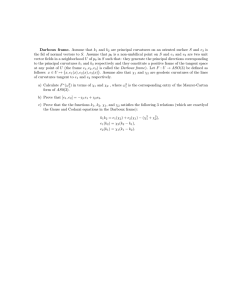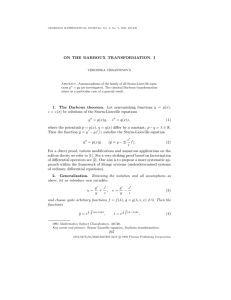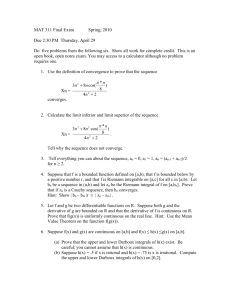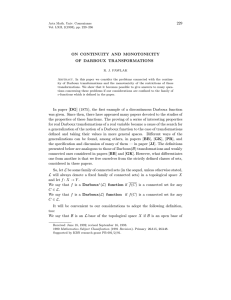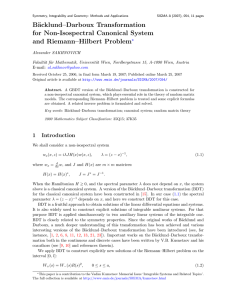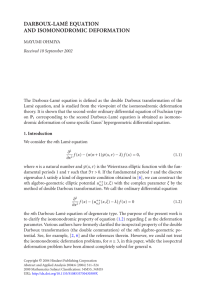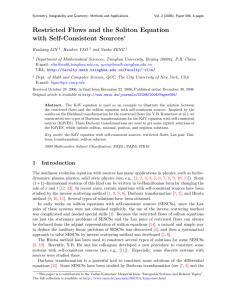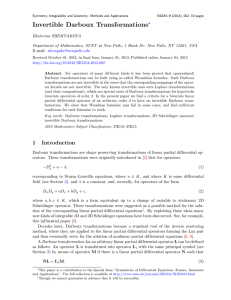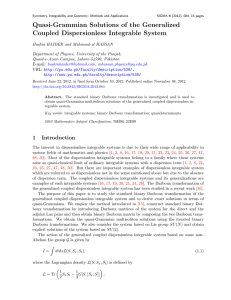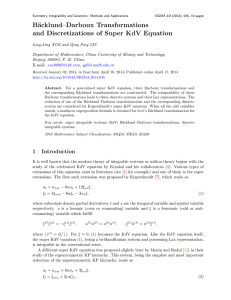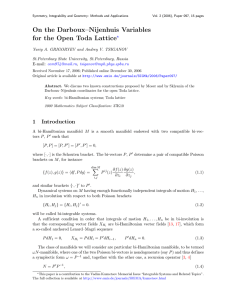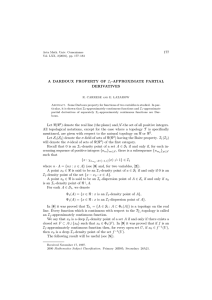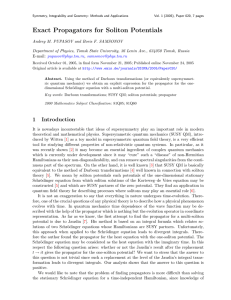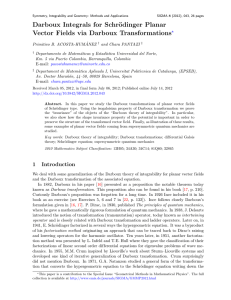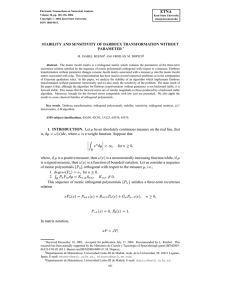Document 10584042
advertisement
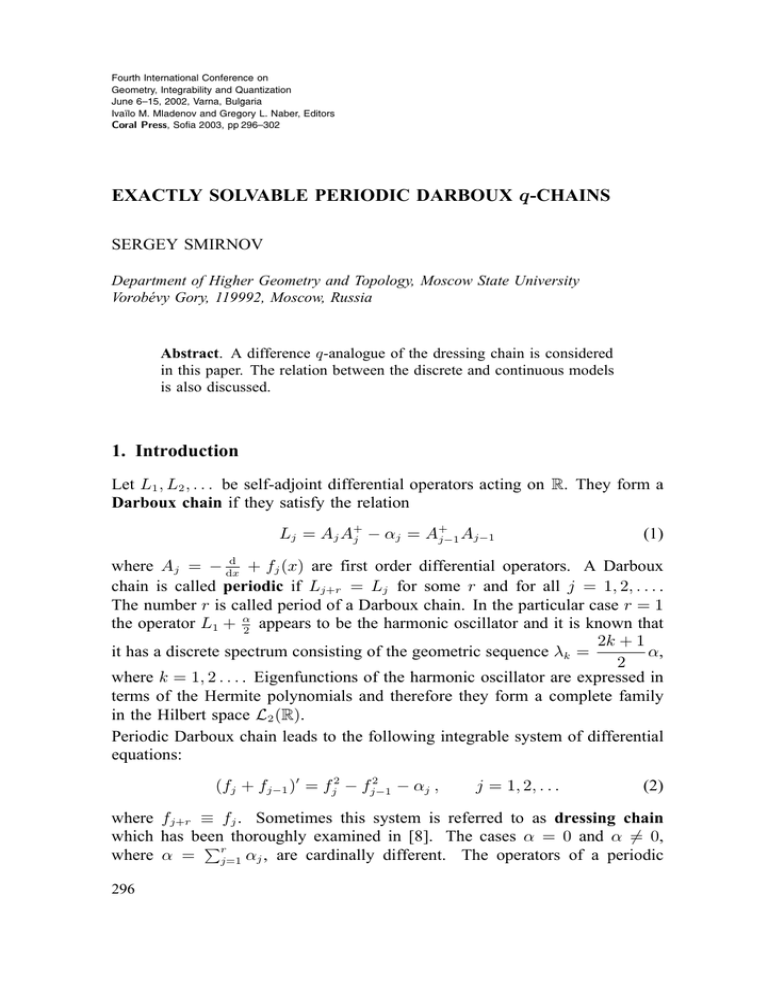
Fourth International Conference on Geometry, Integrability and Quantization June 6–15, 2002, Varna, Bulgaria Ivaïlo M. Mladenov and Gregory L. Naber, Editors Coral Press, Sofia 2003, pp 296–302 EXACTLY SOLVABLE PERIODIC DARBOUX q-CHAINS SERGEY SMIRNOV Department of Higher Geometry and Topology, Moscow State University Vorobévy Gory, 119992, Moscow, Russia Abstract. A difference q-analogue of the dressing chain is considered in this paper. The relation between the discrete and continuous models is also discussed. 1. Introduction Let L1 , L2 , . . . be self-adjoint differential operators acting on R. They form a Darboux chain if they satisfy the relation + Lj = Aj A+ j − αj = Aj−1 Aj−1 (1) d + fj (x) are first order differential operators. A Darboux where Aj = − dx chain is called periodic if Lj+r = Lj for some r and for all j = 1, 2, . . . . The number r is called period of a Darboux chain. In the particular case r = 1 the operator L1 + α2 appears to be the harmonic oscillator and it is known that 2k + 1 α, it has a discrete spectrum consisting of the geometric sequence λk = 2 where k = 1, 2 . . . . Eigenfunctions of the harmonic oscillator are expressed in terms of the Hermite polynomials and therefore they form a complete family in the Hilbert space L2 (R). Periodic Darboux chain leads to the following integrable system of differential equations: 2 − αj , (fj + fj−1 )0 = fj2 − fj−1 j = 1, 2, . . . (2) where fj+r ≡ fj . Sometimes this system is referred to as dressing chain which has been thoroughly examined in [8]. The cases α = 0 and α 6= 0, Pr where α = j=1 αj , are cardinally different. The operators of a periodic 296
